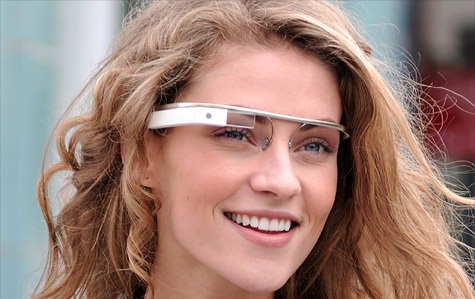This is the third software update so far for Glass. In June, Glass got a big upgrade for its camera, with the release of new software that now better detects low-light situations and includes automatic High-Dynamic-Range (HDR) photo-taking capabilities.
The camera update allows users to capture a rapid sequence of shots behind the scenes every time they press the camera button so they can choose from the images to get the best photo. That improvement is especially aimed at images taken in low light. The camera software update detects low-light situations and automatically captures a brighter, sharper picture, while HDR will now automatically be used to take pictures in bright scenes. Also included in the update is a screen that invites users to add a caption to their photographs.
The first software update for Glass arrived back in May when features such as incoming Google+ notifications for users were added. Also included in that first Glass XE5 software update was crash reporting for the devices, increased speed for transcription of queries and messages, and the inclusion of international number dialing and Short Message Service (SMS).
 The first Google Glass units began shipping in April to developers who signed up at last June’s Google I/O conference to buy an early set for $1,500 (£965) for testing and development, where it was the hit of the conference. Google also then began shipping Glass units to lucky users who were selected in a contest for the opportunity to buy their own early versions of Glass. In February, Google expanded its nascent test project for its Glass eyewear-mounted computer by inviting interested applicants to submit proposals for a chance to buy an early model and become part of its continuing development. In March, Google also began notifying a pool of applicants who were selected to purchase the first 8,000 sets of Google Glass when they become available for real-world use and testing later this year by consumers. Those selected applicants have been receiving their units in waves.
The first Google Glass units began shipping in April to developers who signed up at last June’s Google I/O conference to buy an early set for $1,500 (£965) for testing and development, where it was the hit of the conference. Google also then began shipping Glass units to lucky users who were selected in a contest for the opportunity to buy their own early versions of Glass. In February, Google expanded its nascent test project for its Glass eyewear-mounted computer by inviting interested applicants to submit proposals for a chance to buy an early model and become part of its continuing development. In March, Google also began notifying a pool of applicants who were selected to purchase the first 8,000 sets of Google Glass when they become available for real-world use and testing later this year by consumers. Those selected applicants have been receiving their units in waves.
General Availability
Each Google Glass device includes adjustable nose pads and a high-resolution display that Google said is the equivalent of a 25-inch high-definition screen from 8 feet away. The glasses also boast a built-in camera that takes 5-megapixel photos and video at 720p. Audio is delivered to wearers through their bones, using bone-conduction transducers that were revealed in earlier reports.
Google Glass isn’t yet ready for the general public, but sales of the devices are now expected to begin sometime later this year, according to a recent eWEEK report. That’s at least months earlier than the 2014 retail debut the company had been targeting since last year, a source inside Google told eWEEK. The source would not elaborate on why the retail launch schedule is being moved up.
The concept of Google Glass has been a hit so far for Google, but some critics argue that they continue to be worried about the privacy implications surrounding the use of Glass.
Do you know all about the Android platform? Take our quiz!
Originally published on eWeek.




